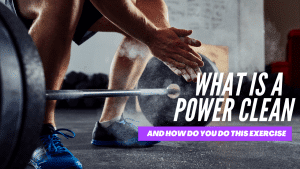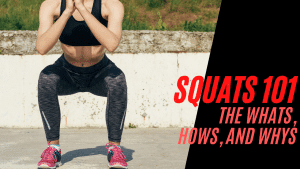How to do a sumo squat and the benefits of this exercise
Sure, regular squats are good for the butt and the lower body in general, but doing it too often can get boring over time. Just like any other exercise, the squat has other variations too that you can substitute for the traditional, and trying one or two every once in a while can make squatting a whole lot more exciting and challenging.
And who doesn’t want exciting and challenging when it comes to one’s workout routine, right?
Here is where the sumo squat comes in. It is essentially the same as a regular squat, with only a teeny bit of difference that takes the exercise to a whole new level. If you want to know what that teeny bit of difference is and how it takes the good ol’ boring squat to the next level, then keep scrolling.
What is sumo squat?
The sumo squat is basically just your regular squat with a wider stance. Like, waaay wider. That’s just it, the positioning of the feet is their most obvious difference.
While the toes are only slightly angled out and the stance is normally just hip-width apart in a traditional squat, in a sumo squat the toes are angled out far away from the midline of the body because the feet are placed in a much wider stance.
Since your thighs are wide open, the foot placement now shifts your base of support, allowing you to hit a few more muscles harder than in a traditional squat. You are still targeting the quads, glutes, hamstrings, hip flexors, and calves in a sumo squat, but the adductor muscles—the ones responsible for opening your thighs—are given more emphasis.
In simple words, the sumo squat works the inner thighs more.
How to sumo squat
All this talk of sumo squat must be making you curious about how it is actually done, so here is a step-by-step guide to get you started:
- Begin by standing wide with your feet far away from each other, roughly wider than hip-width apart.
- Angle your toes out and away from the center of your body.
- Bend at your knees and hips to lower yourself into a squat.
- Squeeze your glutes once you reach the bottom of the movement to activate it.
- Pause briefly then drive through your heels and straighten your knees and hips to go back to the starting position.
- Repeat for 3 sets of at least 12 repetitions each.
Pretty simple, right?
How to progress your sumo squat
But of course, we read your mind so now we know that you are wondering how you can make the sumo squat a bit more difficult. We will get to that in a bit but just a word of advice: make sure that you have mastered the proper form and movement first before progressing your sumo squat.
Now, assuming that you are already a pro on the bodyweight version, you can start incorporating weights like dumbbells and kettlebells by placing them in a racked position, or by holding either one of them with both hands hanging between your legs.
Once you have mastered the sumo squat with smaller weights, you can add more resistance by introducing a barbell to your routine. Think back squats but with a wider stance. However, just like in a regular back squat, use only the bar at first then gradually load it with weights to avoid any injuries. The good thing about doing back squats with a wider stance is that it allows you to lift heavier weights than a traditional squat.
If this is still not challenging enough for you, try front squats. Instead of placing the barbell at the back of your shoulders, this time it needs to be at the top, like almost touching your throat. Be sure that your wrists are flexible enough if you choose to do this though because you will have to raise your elbows at shoulder-level and bring your hands near your shoulders, with your knuckles almost touching them.
Why should you aim for stronger inner thighs?
Let’s be real here; no one ever starts a fitness journey by saying, “I want strong inner thighs.” It is almost always the abs, butt, chest, or biceps. But the truth is, strengthening the inner thighs is just as important as strengthening these superficial muscles.
Squats in general are a great way to improve lower body strength, stability, and balance. Since squatting is a compound movement, it targets most of the major muscles in the lower body that are used in everyday activities such as walking, running, and climbing the stairs.
With strong inner thighs, doing all these and more would be such a breeze. And who doesn’t want to do things with more ease, right?
But what else are the benefits of having strong inner thighs?
- Strong inner thighs ease muscle tension in your legs and groin.
- Strong inner thighs improve flexibility.
- Strong inner thighs increase the legs’ range of motion.
- Strong inner thighs prevent muscle strains and tears.
- Strong inner thighs can help reduce soreness after a workout.
- Strong inner thighs can boost athletic performance.
The benefits are endless and we could go on, but if these are still not enough to convince you how effective sumo squats are, then we don’t know what will.
Sumo squat mistakes to avoid
Sumo squats are no exception to mistakes, so read on to know what the things you should avoid are.
Rounded back
If you are sumo squatting with a loaded bar, a rounded back is common and is usually the result of a weak core. This is because your back is trying to accommodate the weight you are lifting by arching the spine. To avoid this, try decreasing the weight and focus more on doing the exercise with proper form and only increase it when you can keep a neutral spine while squatting.
Torso too forward
Your torso leaning too far forward is normally the result of tight hip flexors and calves. But while untightening them will not happen overnight, you can always do basic stretches every day to gradually loosen them over time. If you are including weights in your sumo squat, too much of it can also cause your torso to lean forward excessively, so make sure that you lift only what you can and only progress as you get stronger.
Unstable knees
Knees caving in during a sumo squat—or any squat variation for that matter—is an all too familiar sight, especially with beginners. Since this mistake is usually the result of weak glutes and tight hip flexors, focus on improving mobility first by doing stretches that target the hips before starting the exercise.
More exercises to try for stronger inner thighs
Did the sumo squat make you realize how important strong inner thighs are? Here are a few other inner thigh strengthening exercises you can try.
Leg swings
Begin by standing with your feet together and your arms spread out. Raise your right leg out to the side while maintaining balance on your left foot then swing the right leg in front of the left leg and then swing it back out to the side. Repeat according to your desired number of reps before doing the exercise with your other leg.
Crossover stretch
Begin by sitting upright on the ground. Bend your right leg and cross it over your left leg then place your left elbow on the outside of the right leg and rotate your torso. Breathe out and hold that position for at least 30 seconds and make sure to stretch both legs so you can feel the burn in your glutes.
Butterfly stretch
Begin by sitting up in an upright position with your knees bent. Drop your legs to the sides and bring the soles of your feet together then grasp your feet and ankles. Slowly lean forward while maintaining a neutral spine then place your elbows on top of your thighs and gently press down until you feel a stretch. If you want to feel more stretch, push down on the thighs with your elbows to move your knees toward the floor.
Lateral squat
Begin by standing with your feet out sideways and your toes turned out slightly so that they are more than shoulder-width apart. Raise your arms forward at shoulder level then bend your left knee and push your hips backward to lower yourself over your left foot. Your right leg should remain straight while keeping your heels firmly planted on the ground.
From this position, straighten your left leg to stand up and return to the starting point then bend your right knee to lower yourself over your right foot. This time, your left leg should remain straight while your heels are still firmly planted on the ground. Keep squatting from side to side until you have finished your desired number of reps.



